18 Types of Verbena to Bring Vibrant Hues to Your Garden
Author: Jen Worst | Editor: Omar Alonso
Review & Research: Jen Worst & Chris Miller
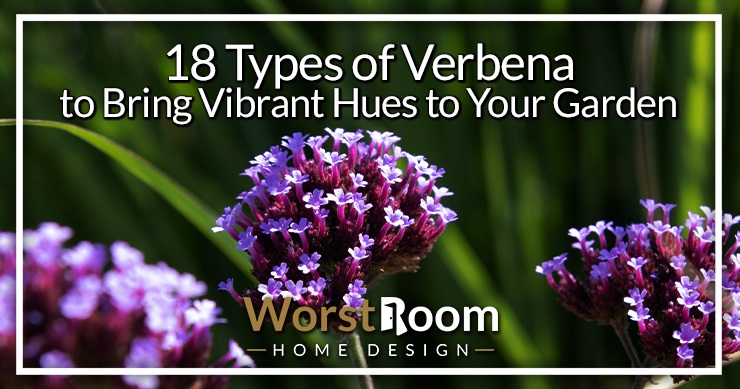
Verbena is an herbaceous plant that is widely cultivated all over the globe. You can find types of verbena practically anywhere, from Asia to Europe and America.
Some species are native to specific locations, yet the verbena species all across the world are ginormous. Some people know this plant as vervain.
Verbena comes from the Verbenaceae family. Some species are perennial, and some are annual. These bushy plants produce a range of blooms in a variety of color combinations.
Furthermore, the vibrant hues of the flowers hold a unique place in the hearts of all gardeners. Verbena lovers respond differently to different varieties of verbena.
18 Types of Verbena
There are over 150 species of verbena that need proper sunlight for sustaining. We have listed down a few popular verbena species that you might like to have in your collection.
A random fun note is that verbena is an edible flower that acts as one of the types of garnish used in meals and drinks. Also note that some of these are trailing verbenas and some are upright verbenas, meaning that some will try to crawl out of the container or flower bed and grow out of control.
Common Vervain - Verbena officinalis
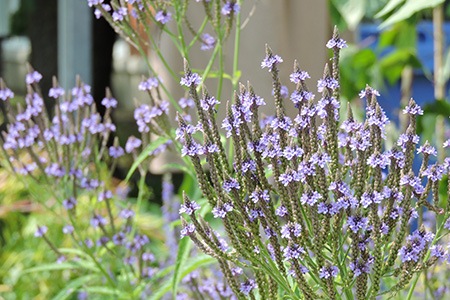
The scientific name of common verbena is Verbena officinalis, which is a medicinal herb indigenous to Europe. It looks, visually, like it could be one of the types of wisteria even.
These verbena varieties are also known by several other names, including holy herbs, wild hyssop, and mosquito plant. These attractive plants may reach a height of 70cm and have a light purple blossom. Verbena typically will reach less than 1 foot in height and grow 2 to 5 feet wide, which makes this one fairly big, though some like Purpletop (below) can reach up to 5 feet tall .
Common verbena's therapeutic usefulness was initially identified in Australian medicine. Some people use it as herbal tea when they have a fever or perhaps another infection.
Blue Verbena - Verbena hastate
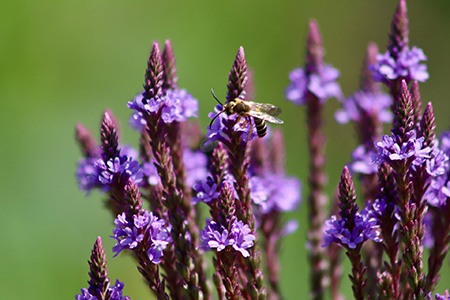
Blue vervain is also known as American vervain. The flower is either purple or purple-blue. These herbaceous plants can grow 1.5 to 2 meters long. Having considered the plant's height, the blossoms are quite petite.
Let's look at the leaf structure closely. The leaves of these verbena types have a double serrate margin. The forward-pointing notch on the edge is known as a "double serrate margin."
These types of verbena are mostly seen in the North American region and can sustain themselves in rough weather conditions such as drought. Flowers bloom once every year, and that happens mostly in the summer.
White Vervain - Verbena urticifolia L.
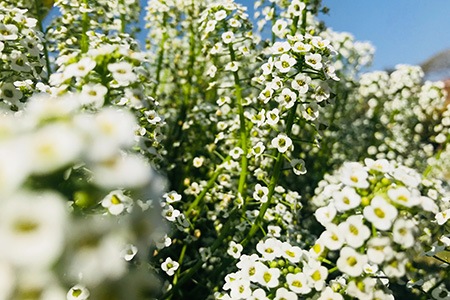
Like other common vervains, white vervain thrives in direct sunlight. Despite its high hardiness, it cannot withstand a shady environment. It has a tall stalk with little blooms that face upward.
The leaf orientation is the reverse, and the plant has hairy stems. Because the small flowers are white, the name was given to them.
Keep the soil wet while planting in your garden, since they prefer a damp atmosphere. They grow to be about one foot tall and bloom from June to September.
Purple Top Vervain - Verbena bonariensis
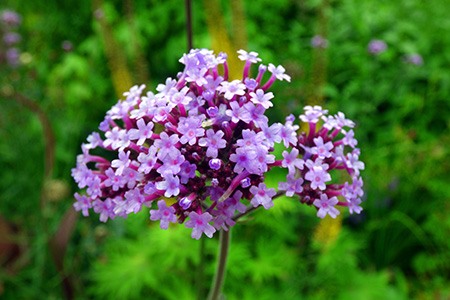
Purpletop vervain is one of the tallest verbenas. This one is a terrestrial plant. Its height can reach up to four to five feet, and it spreads about one to two feet in width.
The shape of the leaves is ovate. Spikey flowers and hairy stems are the fundamental characteristics of these pretty verbenas.
USA horticulture used the purpletop name for these verbena types for the first time. Argentinian vervain is one of the other names for purpletop vervain.
Rigid Verbena - Verbena rigida
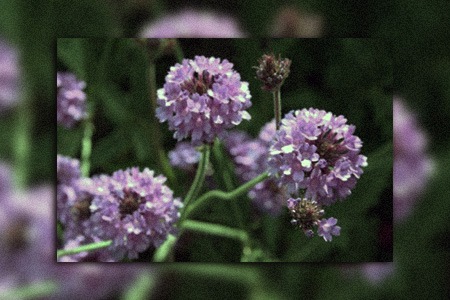
Rigid verbena (or Tuberous vervain) is a little different from other hardy vervains. It can sustain itself in the summer to spring season pretty well but doesn't respond well in the winter. Not only that, it has stalk less leaves with purple and magenta flowers.
This plant received the Award of Garden Merit, which is acknowledged as one of the most prestigious awards in the gardening industry.
The flower bloom on this slender vervain lasts for weeks, making it ideal for gardening. If you're searching for a blooming plant with a lot of bloom and scent, rigid verbena is a fantastic pick. If you're looking for a flower to grow along side any types of lupine, you can't go wrong with any of these slim verbena.
Hoary Vervain - Verbena stricta
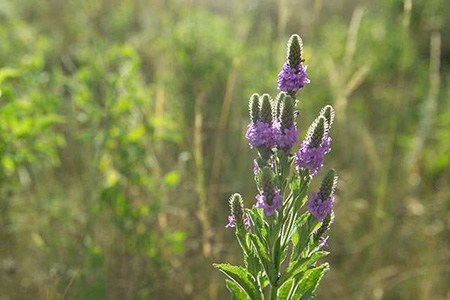
Hoary verbena is a native flower plant to the central USA. While roaming around most of the central region of the USA, you will find these tiny flowing plants in the landscapes. The miniature purple blossoms make the scene more calming and appealing to spectators.
In the summer, you may enjoy the full bloom of these types of verbena, and an intriguing feature is that the bloom lasts longer than the normal duration.
For four to six weeks, you may experience beautiful blooms. The leaves are a suitable diet for the caterpillars, which makes them suitable for butterfly gardens.
Lemon Verbena - Aloysia citrodora
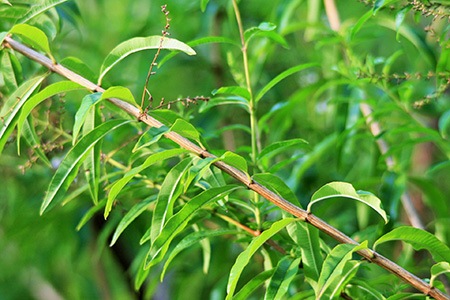
Lemon verbena is a very popular option among those who don't want to find certain types of creatures in their flower beds while they're out working on them. I'm specifically referring to people with spider phobias, and this verbena is one of the plants that repel spiders.
This plant needs to either be grown in a container to help manage the size or you need to be cognizant of the fact that this thing can get tall and wide on you pretty fast. If you let it grow wild it can reach as high as 10 feet tall.
Lavender Spires - Verbena macdougalii
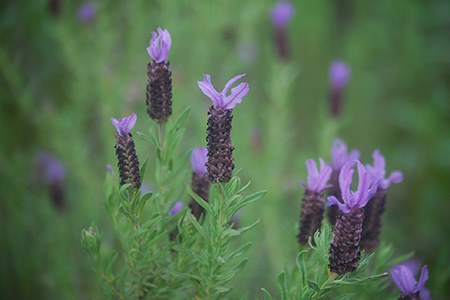
This deciduous plant is suitable for all types of gardens. Whether you have a formal garden or an informal one, you can pick this one with no hesitation. These low-maintenance plants will give you a perfect bloom if placed in a sunny spot and planted in well-drained soil.
You can see the flowers blooming from summer to autumn. The hardiness of the plant is H5. As it is a hybrid plant, the propagation is a little harder than the natural one.
Though these verbena types produce fewer seedlings than the average vervains, you can still try other methods for propagation.
Bampton Verbena - Verbena officinalis var. grandiflora
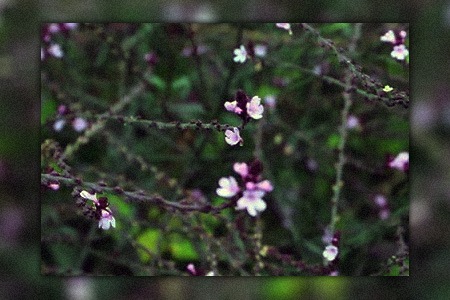
Verbena "Bampton" is native to the UK. This plant has a pollen-rich flower that attracts pollinators such as bees, insects, butterfly moths, etc. There have been no reports of harmful consequences from Verbena 'Bampton' to any living beings.
For the best bloom, these verbena varieties need sunlight abundantly. Keeping the plant in a south-facing orientation will help it grow even more beautifully.
This hardy plant needs limited care and attention for growth. The use of minimal water is enough to get this one going in your garden.
Lollipop Verbena - Verbena bonariensis
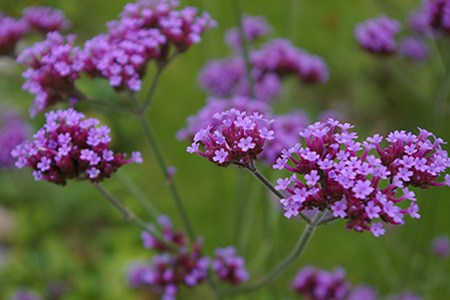
Another wildlife catcher is Verbena bonariensis ‘Lollipop’. This one is also a garden plant. All these types of verbena need is a sunny place with a low level of care.
It is a gardener's plant. The full bloom occurs from July to October. The reason behind calling it a gardener’s plant is the beautiful bloom.
Wildlife is attracted to these flowers and roams around effortlessly. Pair it with some other sorts of grass in a pot or make a solo planting bed for them. Both the ideas work for them.
The color of the flower is purple. Its flower stays in a bunch with a long stem. The shape of the flower is ideal for adding to a bouquet.
Verbena Corymbosa - Glandularia corymbosa
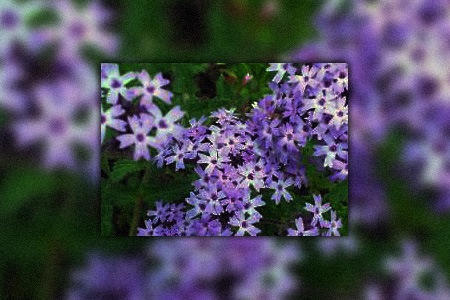
Glandularia species are like cousins to verbena. Because of their highly similar structures, they often get recognition as verbena species. Unlike verbena flowers, the significant feature of Glandularia corymbosa is that the flowers contain five petals.
The colors you can observe in this variety are blue, pink, and purple. It grows better in soil that is enriched with micronutrients. The perennial plant measures 60 cm in length.
The spread is also 60 cm. Place it in a sunny or partly sunny place for better growth and blooming. They are mostly native to different regions of America.
Blue Princess -Verbena hybrida
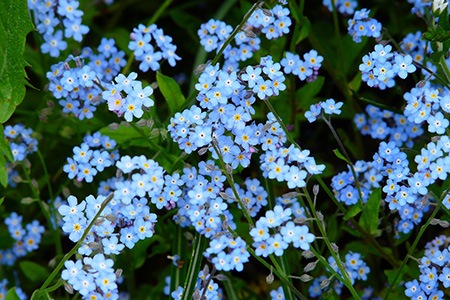
Verbena hybrida "Blue Princess" is a hybrid that came from England and is now exploring the USA. As it is a hybrid plant, you will see them in random landscapes.
It is mostly for gardeners who love verbena. The care is almost the same as with other verbenas. But if you place the plant in a shady place, it tends to develop mildew very quickly.
That is why full sun exposure is a must for this variety. Try to maintain well-drained soil with a mix of sand while preparing the container for this blue princess. If you like the look of these but would rather have them be pink in color, check out the Texas Rose verbena.
Narrow Leaved Vervain - Verbena simplex
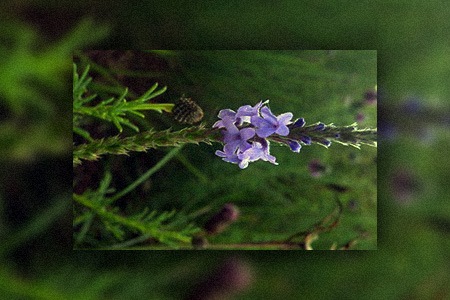
Narrow-leaved vervain (Verbena simplex) is native to Illinois in the United States. They are also indigenous to Canada's province of Ontario.
It flourishes on the prairies abundantly. If you look attentively at the leaves, you can see why it got its name. Unlike other vervains, the leaves are thin and prickly at the margins.
These wildflowers may be found along the roadside in abundance. These types of verbena have a great tolerance for drought. From May until September, the plant is in full bloom.
Red Devil Verbena - Verbena peruviana
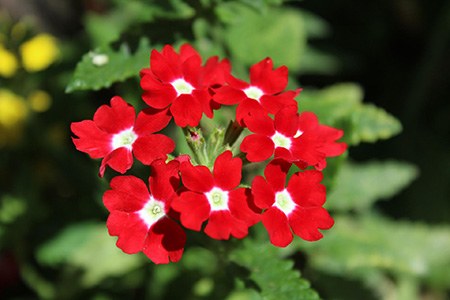
The red devil perennial verbena is known as Verbena peruviana. The vibrant red color of the flower adds its specialty to the Verbenaceae family.
They are also known as Peruvian mock vervain. Don't get confused with the name; it is not native to Peru by any chance. It is more indigenous to other South American countries, such as Brazil, Argentina, and even some parts of Europe also.
The hardiness zone 7 is perfect for cooler environments as well. You can enjoy the beauty of the red blossoms of these verbena varieties in the spring, summer, and fall seasons of the year.
Moss Verbena - Verbena Tenuisecta
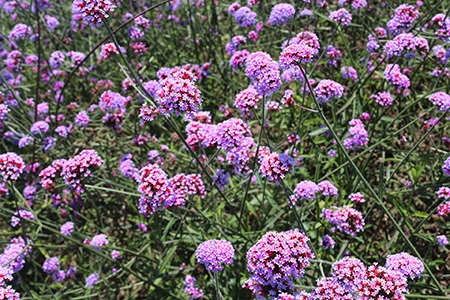
Verbena tenuisecta is referred to, colloquially, as moss verbena. The reason for this is that their leaves are so small and whispy that they sort of look like moss. These look amazing but know that they're among the smallest of the verbena species, growing on average around 6 inches tall.
These look great in rock gardens, along walkways or flower beds surrounding your types of mailboxes, or really anywhere. They can handle winter and the accompanying frost just fine, but won't bloom until later in summer and early in fall.
Brazilian Verbena - Verbena Brasiliensis
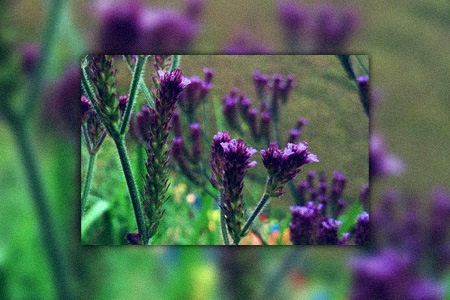
You'll hear people refer to the Purpletop types of verbena as the Brazilian one, but that's simply not the case. The real Brazilian verbena species is unique, and while it comes from Brazil, it's invasive and has spread around the world where people see it as an annoyance.
But if you manage it as a plant or shrub and don't let it trail off, it's a beautiful verbena option. The flowers will be of a purple color, where each of the tubes has clusters with five lobes of leaves, which are small and have an indention running down their center.
California Vervain - Verbena Californica
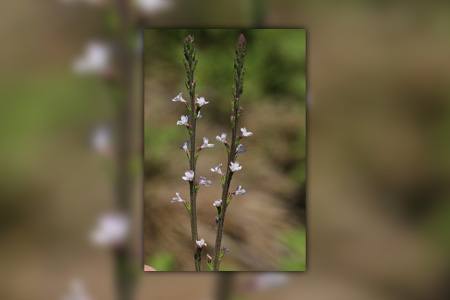
Good luck getting your hands on this rare verbena species. These verbena types grow mainly only in Tuolumne County in the state of California in the U.S. It's very pretty, with stems that have fine hairs that sprout leaves that look like blades of grass.
This California vervain can be found among the Red Hills mountains, and they're listed as endangered because animals like cows will eat them, and humans have interfered with their environment through industries like mining, land fills, and more.
Mint Vervain - Verbena Menthifolia
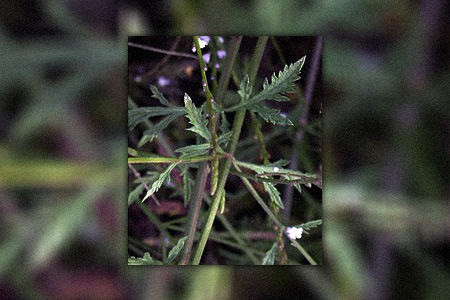
This menthifolia verbena species is sometimes called mint-leaved verbena. It grows natively in the southwest of the U.S. and in north Mexico. If you look for it in the wild, go to open spaces that stay dry.
These grow to about 30 inches in height at max. You'll recognize them by their small and hairy leaves that poke out from their upright stems. The inflorescences flowers will be in the typical clusters.
Types of Verbena to Splash Color in Your Garden
Verbena is a wonderful plant that comes in a plethora of variations, each of which is more vivid than the others. For people who have only recently begun to study plants, the differentiating elements are pretty simple for the verbena species.
After learning more about the many verbena varieties, you will be able to plant them in your yard. Many individuals enjoy flowering plants, but when it comes to caring for them, they abandon gardening. However, you may always begin with the simpler alternatives. To begin your gardening pastime, let's start with your favorite types of verbena.



